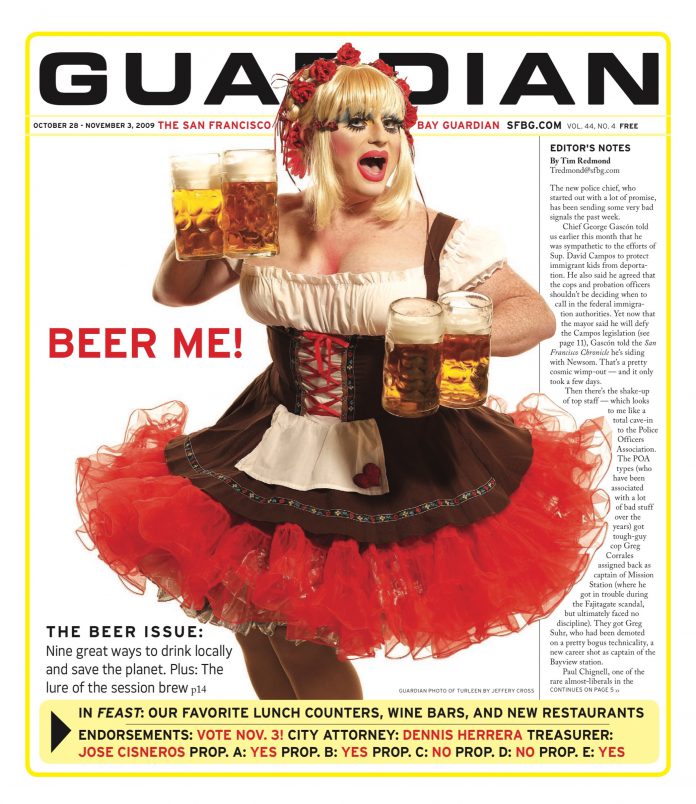arts@sfbg.com
DANCE For too many years ethnic dance, traditional dance, folk dance, culturally-specific dance — whatever label you stick on it — has been a stepchild on American stages. Considered of little interest to observers beyond the cultural groups in which its practitioners were based, general audiences admired its colorfulness and derided its lack of innovation. Yet with increased exposure, traditional dance forms have become more respected and have done their part to make the world more of a global village.
With the art form less under siege, stirrings have been coming from within the genre by dancers pushing at the traditions’ parameters. It’s a worldwide phenomenon. In the mid-1990s flamenco dancer Joaquín Cortés bared his chest and started performing to pop and jazz. Purists shuddered when Kathak dancer Akram Khan started to integrate modern dance practices into his performances. At the SF Ethnic Dance Festival this year, winds of change can also be felt at the venerable Ethnic Dance Festival. This year Los Lupeños de San José, one of the Bay Area’s oldest Mexican companies, performed a hot mambo with the women in anything but long flouncy skirts, and Indonesian dancer Sri Susilowati’s mourning dance was full of contemporary accents.
Traditional dancers who want to rethink conventions often feel homeless because they don’t fit into any established performance categories. That’s where Performing Diaspora steps in. CounterPULSE’s two-year initiative culminates in three weeks of performances starting November 5.
Debbie Smith, cultural program coordinator at the Arab Cultural and Community Center, is one of the three curators who chose 13 artists from the more than 60 who applied from throughout California. As "a little white girl from Texas" (as she calls herself) who speaks Arabic and is trained in Egyptian folk dance, she has learned to live with the sensitivities that surround fears about dilution of content and about perceptions of being less than respectful to well-defined art forms.
Since Performing Diaspora is the first festival of its kind, the curators had to feel their way into this new arena. It was a delicate process because "the need for support in dance is so great," Smith explains. "We did not know what we would get, though we were looking for artists who served traditions without wanting to be confined by them."
What the Festival got were artists like Charlotte Moraga, the primary dancer of the Chitresh Das Dance Company. Twenty years ago at San Francisco State University, the jazz dancer from Florida stumbled into her first Kathak class when the jazz class she wanted was full. The festival also got Devendra Sharma from Fresno, who learned Nautanki, a traditional folk music theater style from northern India, from his father.
At a recent work-in-progress showing, Moraga’s A Conference in Nine, based on a Sufi poem, A Conference of Birds, was performed with jazz, North Indian, and South Indian musicians. It looked as traditional and contemporary as you would want. The same was true for Sharma’s Mission Suhani, a reinterpretation of one spunky woman’s refusal to be cheated out of her dowry.
Almost half Performing Diaspora’s lineup hails from beyond the Bay Area, with artists who have made rethinking traditions a core element of their work, and those who only recently entered this wobbly territory. But the most unexpected participant in Performance Diaspora is a local: Kunst-Stoff’s Yannis Adoniou, best known for his ballet-based postmodernism. He will present Rembetiko, a work-in-progress based on the underground culture of Greeks who returned from abroad at the turn of the 20th century. "My uncle was a rembetiko musician", Adoniou says. "I used to dance to his music when I was five."
Performing Diaspora
Nov 5-22 (Thurs-Sat, 8 p.m.), $15–$25
CounterPULSE, 1310 Mission, SF
(415) 626-2060, www.counterpulse.org

